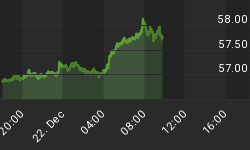Oil Market Summary for 09/20/2010 to 09/24/2010
Crude oil prices battled their way to a gain for the week as worries about the economy warred with the upward pressure from a weakening dollar.
Positive news in several categories of durable goods orders helped boost oil prices nearly 2% on Friday, so that the benchmark West Texas Intermediate futures contract, which switched from October to November this week, could tack on nearly 4% for the week.
The dollar was under pressure most of the week as the prospect of further quantitative easing from the Federal Reserve pushed the U.S. currency down against the euro, yen and most other major currencies. The failure of Japanese authorities to intervene further by selling yen also contributed to the dollar's decline.
A decline of the dollar in foreign exchange markets generally means an increase in oil prices, which are denominated in dollars. In the middle of the week, concerns about oversupply and faltering demand for oil outweighed the impact of the weaker dollar and kept oil prices depressed.
The benchmark contract finished the week at $76.49 a barrel, compared to $73.66 the previous Friday. The euro gained more than 3% against the dollar during the week, trading at $1.3486 late Friday.
The dollar traded marginally lower against the yen Friday, at 84.34 yen, after spiking above 85 yen earlier in the day on rumors that Japan's central bank might be selling yen again. The dollar fell back Friday as it became evident Japanese authorities were not intervening.
The Bank of Japan intervened in currency markets last week for the first time in six years to brake the rise of the yen against the dollar. A higher exchange rate makes it more difficult for Japanese exporters to compete in world markets.
The U.S. Commerce Department on Friday reported a decline of 1.3% of durable goods orders in August, but the breakdown showed the decline due to a drop in orders of transportation equipment while most other categories showed strong gains. The relatively strong showing for capital goods indicated the corporations were investing for further growth.
The midweek inventory report from the U.S. Energy Information Administration was bearish for oil prices because it showed a gain of 1 million barrels when economists had been expecting a decline of 1.5 million barrels in inventories. Inventory gains indicate weak demand for crude oil.
Source: http://oilprice.com/Energy/Oil-Prices/Weaker-Dollar-Propels-Oil-Higher-Amid-Mixed-Economic-News.html
By Darrell Delamaide for OilPrice.com who focus on Energy, Finance and Geopolitical news. OilPrice.com also has a geopolitics newsletter that is delivered twice a week for free.















